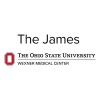
Controlled Ovarian Stimulation in Newly Diagnosed Breast Cancer PatiEnts (fAMHOPE)
Breast Neoplasm Malignant FemaleThis is a multicenter hospital-based prospective cohort study conducted in institutions with known expertise in performing oocytes/embryo freezing for fertility preservation. The study aims at refining the understanding of the efficacy and safety of controlled ovarian stimulation with or without letrozole in young women with newly diagnosed breast cancer who are candidates to receive (neo)adjuvant chemotherapy.

Intelligent Vacuum Assisted Biopsy Immediately Before Surgery as an Intra- or Pre-Operative Surrogate...
Breast CancerNeoadjuvant chemotherapy (NAC) is common practice in the primary treatment of breast cancer, leading to a complete pathologic remission (pCR) of the tumor in more than 50% in aggressive tumor types. As NAC induces different response patterns, radiologic imaging is not sufficiently accurate in predicting residual disease. Because of this uncertainty, surgery is so far the only valid option to either ascertain complete response or to remove the complete residual disease. Vacuum-assisted biopsy (VAB) with the possibility of obtaining tissue of the former tumor center could contribute more reliably to detect any residual tumor or respectively, rule out residual disease. Ultrasound (US) or mammographically (MG) guided VAB will be used in this trial in order to detect residual tumor lesions in patients with radiological complete response (rCR) after NAC. The investigators will evaluate the diagnostic accuracy of the post-NAC VAB sample in comparison to the sample obtained in open surgery.

Pilot Clinical Evaluation of a Microwave Imaging System for Breast Cancer Detection
Breast CancerThe trialed investigational medical imaging device is a low-power microwave breast imaging system for cancer screening purposes. It is an active device which uses non-ionizing radiation. Microwave imaging is an emerging imaging modality for the early detection of breast cancer. The physical basis of microwave imaging is the dielectric contrast between healthy and cancerous breast tissues at the microwave frequency spectrum. This study is a pilot Clinical Evaluation of a microwave imaging system (Wavelia #2) for Breast Cancer Detection. The clinical data that will be collected in the context of this study is intended for the assessment of the imaging diagnostic capability and the safety of the investigational device.

A Study to Find the Best Dose of ASP5354 to Show Lymph Nodes in People With Breast Cancer or Melanoma...
Sentinel Lymph Node BiopsyBreast Cancer1 moreThis study is for women with breast cancer and for adults with melanoma. Breast cancer is a type of cancer when cells in the breast turn into cancer cells, which may grow out of control. Melanoma is a type of skin cancer that starts in cells called melanocytes. These cells make a substance called melanin which gives the skin its color. In this study, people will have surgery to remove the lymph node closest to the site of their cancer. This lymph node is called the sentinel node. This is done to check if the cancer has spread from the original site to the sentinel node. This procedure is called a sentinel node biopsy. This study will provide more information on a potential new dye, called ASP5354, used in sentinel node biopsies. ASP5354 may help to show the lymph nodes more clearly during surgery. This will help the surgeon find the lymph node closest to the site of the cancer (sentinel node). The main aim of the study is to find the best dose of ASP5354 that clearly shows the lymph nodes during surgery. This is an open-label study. That means each person in the study and the study doctors knew that person received ASP5354. Each person will only receive 1 dose of ASP5354. This dose will consist of 2 to 4 injections of ASP5354 around the cancer site. Small groups of people will each receive a different dose of ASP5354. The first group will receive a low dose of ASP5354. If the lymph nodes are clearly seen, the next group will receive a lower dose of ASP5354 and the following group will receive a dose of ASP5354 that is higher than the dose the first group received. Then, the results will be checked by an independent panel of experts. Depending on the results, the next groups may start on the current doses of ASP5354 or may receive a higher dose. In this study, up to 6 doses of ASP5354 may be given, but each person only receives 1 of these doses. People that want to take part in the study will be checked by a study doctor. This will be on a separate visit before their surgery. Before surgery, people who take part in the study will be asked if they have any other medical problems. They will have a physical exam, an ECG to check their heart rhythm, and have their vital signs checked (blood pressure, pulse rate, and breathing rate). Other checks will include some blood and urine samples taken for laboratory tests. During surgery, a study surgeon will inject ASP5354 near the cancer site. They will record how clearly they can see the lymph nodes. Some blood samples will be taken for laboratory tests and an ECG will be done. After their surgery, people will be asked if they have any other medical problems. People will return to the hospital 9 days later for a check-up. The check-up will include a physical exam, an ECG to check their heart rhythm, and a check of their vital signs (blood pressure, pulse rate, and breathing rate). Other checks will include some blood samples taken for laboratory tests. People will be asked if they have any medical problems and asked to complete a feedback survey.

Testing an Active Form of Tamoxifen (4-hydroxytamoxifen) Delivered Through the Breast Skin to Control...
Ductal Breast Carcinoma In SituEstrogen Receptor PositiveThis randomized phase IIB trial studies how well tamoxifen or afimoxifene works in treating patients with estrogen receptor positive breast cancer. Estrogen can cause the growth of breast cancer cells. Hormone therapy using tamoxifen citrate or afimoxifene may fight breast cancer by blocking the use of estrogen by the tumor cells.

Real-time Intraoperative Breast Cancer Visualization for Margin Assessment
Breast CancerCancer of the BreastThe investigators' preclinical data have demonstrated the feasibility of fluorescence-guided tumor resection by Cancer Vision Goggles (CVG) with LS301 in animal models. In this study, the investigators will conduct intraoperative imaging procedures that have minimal interference with ongoing surgery. The underlying hypothesis is that the accurate detection of all cancer cells highlighted by LS301 during surgery will reduce the number of breast cancer patients with margin positivity to less than 5%, compared to the current surgical paradigm of greater than 20%. The pilot study will obtain critical data required to address the larger question of surgical margin assessment in a full Phase I clinical trial. Phase 1: to determine the safety and optimal imaging dose of LS301 injected in breast cancer patients. Phase 2: to determine the ability of this novel fluorescence imaging agent to predict the presence of positive margins around partial mastectomy specimens and positive SLNs during surgical therapy for breast cancer.

The Effect of Simulation-Based Breast Health Education on Breast Cancer Awareness and Breast Self-Examination...
Breast CancerHealth Knowledge2 moreThis study aimed to evaluate the effect of simulation-based breast health education on breast cancer awareness and breast self-examination practices of Afghan refugee women. The study hypothesized that simulation-based breast health education would have an effect on breast cancer awareness and breast self-examination practices scores among Afghan refugee women.

Feasibility Study of Biobehavioral Stress Reduction Intervention in Patients With Triple Negative...
Anatomic Stage I Breast Cancer AJCC v8Anatomic Stage II Breast Cancer AJCC v84 moreThis clinical trial aims to see if patients with triple negative breast cancer can complete a biobehavioral stress reduction program that also addresses health related social needs (e.g., utilities, transportation, etc.). The stress reduction program is over ten weeks and includes stress reduction (e.g., progressive muscle relaxation), coping, problem solving, communication, and social support. Health related social needs will be evaluated at the beginning of the study, and referrals will be made to social work to help address those needs. The study will examine stress as reported by the patients and also use biological markers.

Home-based Respiratory Muscle Training for Minimizing Side Effects in Patients Undergoing Treatment...
Breast CarcinomaThis clinical trial evaluates whether home-based respiratory muscle training is useful for minimizing side effects in patients undergoing treatment for breast cancer. Over-activation of the nervous system during breast cancer treatment can result in heart- and lung-related side effects which have the potential to reduce a patient's quality of life. Aerobic exercise can help prevent the development of these side effects. However, engaging in regular aerobic exercise may be difficult for breast cancer patients who are actively undergoing treatment. Respiratory muscle training (RMT) involves a series of breathing and other exercises that are performed to improve the function of the respiratory muscles through resistance and endurance training. Home-based RMT may represent a more feasible approach for reducing side effects in patients undergoing treatment for breast cancer.

TeleHealth Resistance Exercise Intervention to Preserve Dose Intensity and Vitality in Elder Breast...
Breast CancerStage III Breast Cancer3 moreThis research is being done to assess whether an exercise intervention with protein intake support vs a health education and support program will make it easier for women age 65 or older who are receiving chemotherapy for breast cancer to receive all of their planned chemotherapy according to schedule and at the planned dose.
